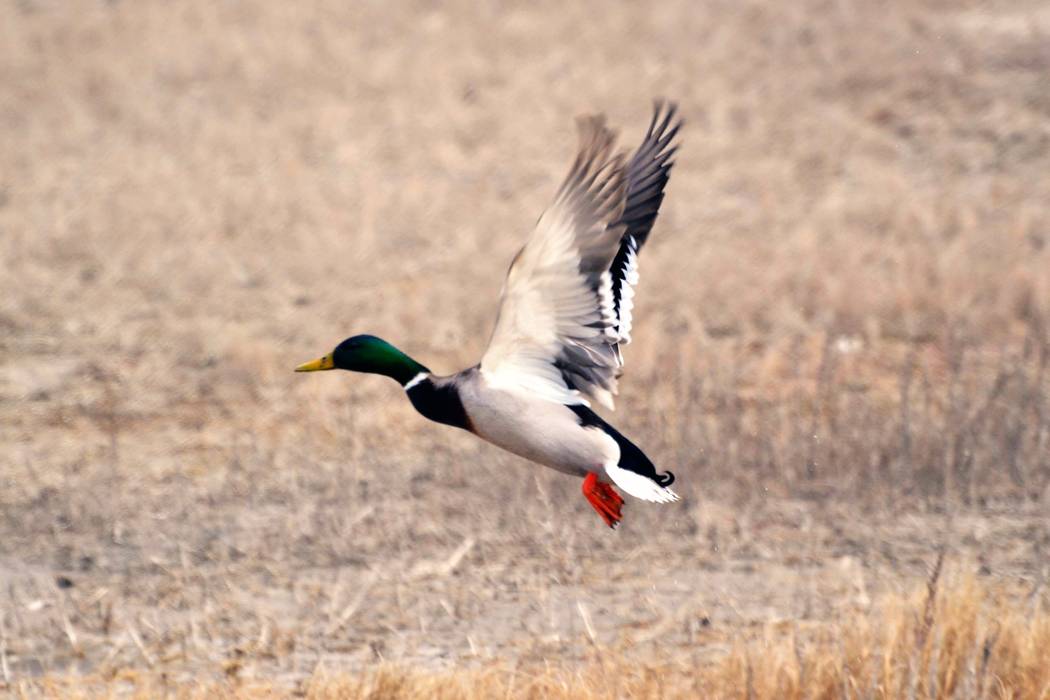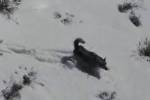Hunters gear up for waterfowl seasons in Nevada, rest of US
As waterfowl hunting seasons begin in Nevada and across the U.S., hunters can expect to find the birds in numbers similar to those of 2018.
The total duck population was estimated at 38.9 million, according to the 2019 Waterfowl Breeding Population and Habitat Survey.
Though that number is 6 percent lower than the 2018 estimate of 41.2 million birds, it remains 10 percent higher than the long-term average, which has been documented annually since 1955. Credited with this reduction in bird numbers is a drier-than-average stretch between fall 2018 and spring 2019 in much of the Canadian prairies.
Along with the lack of precipitation, the prairies also experienced below average temperatures during the same time frame. While some areas experienced a warming trend in December and January, the report states that “…February 2019 was brutally cold across all of the Canadian Prairies.” Both conditions will influence waterfowl reproduction.
Another habitat component that has a direct impact on waterfowl breeding and nesting activities is the number of ponds in the survey area. In 2018, the total number of ponds in Prairie Canada and the north-central U.S. was estimated at 5.2 million, but that number fell to 5 million in 2019. In Prairie Canada, the number of ponds dropped by 22 percent compared to 2018 estimates.
Mallards account for the largest segment of the waterfowl population at 9.4 million birds, a figure that represents a 2 percent increase over the 2018 count and is 19 percent higher than the long-term average. The Gadwall population climbed from 2.9 million birds to 3.26 million, an increase of 13 percent. That’s the largest positive change among the three species showing a population increase. The Gadwall population also is holding at 61 percent higher than the long-term average.
Green-winged Teal increased by 4 percent to 3.1 million birds, while Blue-winged teal decreased from 6.4 million birds to 5.4 million. Despite that drop, Blue-winged Teal numbers are holding at 6 percent higher than the long-term average. The largest decline of 27 percent was experienced by Redheads, but their numbers are managing to stay even with the long-term average. Their population is estimated at about 732,000 birds.
Northern shoveler numbers remain 39 percent higher than the long-term average but experienced a reduction of 13 percent to 3.6 million birds. Also holding at numbers 10 percent higher than the long-term average are Canvasbacks, but the species declined by 5 percent to 651,000 birds. Northern pintails and Scaup also showed declines, and their numbers are well below the long-term average at -42 percent and -28 percent.
Population estimates from this annual survey and other monitoring activities are used by the U.S. Fish Wildlife Service to establish annual hunting season frameworks, which include windows for season lengths and bag limits. The FWS oversees this process because waterfowl are managed under international treaties and The Migratory Bird Treaty Act of 1918.
Nevada is one of 12 western states that comprise the Pacific Flyway Council. The others are Alaska, Arizona, California, Colorado, Idaho, Montana, New Mexico, Oregon, Utah, Washington and Wyoming.
While most of the changes in the framework for the 2019-2020 hunting season affect states in the east, two are reflected in Nevada’s migratory bird regulations. First is a daily bag limit of one bird for northern pintails nationwide. The second is a general season closing date that was previously designated as the last Sunday in January and is now set as Jan. 31.
The combined daily bag limit on all ducks is seven birds but must include no more than two hen mallards, two redheads, two canvasbacks, three scaup and one pintail.
Keep in mind that when hunting migratory waterfowl lead shot is out. Federal and state law require the use of nontoxic shot. The FWS service defines nontoxic shot as “any shot type that does not cause sickness and death when ingested by migratory birds.” Fourteen shot types are approved by the FWS as nontoxic. A complete list can be found at fws.gov/birds/bird-enthusiasts/hunting.php.
Freelance writer Doug Nielsen is a conservation educator for the Nevada Department of Wildlife. His “In the Outdoors” column, published Thursday in the Las Vegas Review-Journal, is not affiliated with or endorsed by the department. Any opinions are his own. Find him on Facebook at @dougwritesoutdoors. He can be reached at intheoutdoorslv@gmail.com.




























